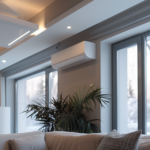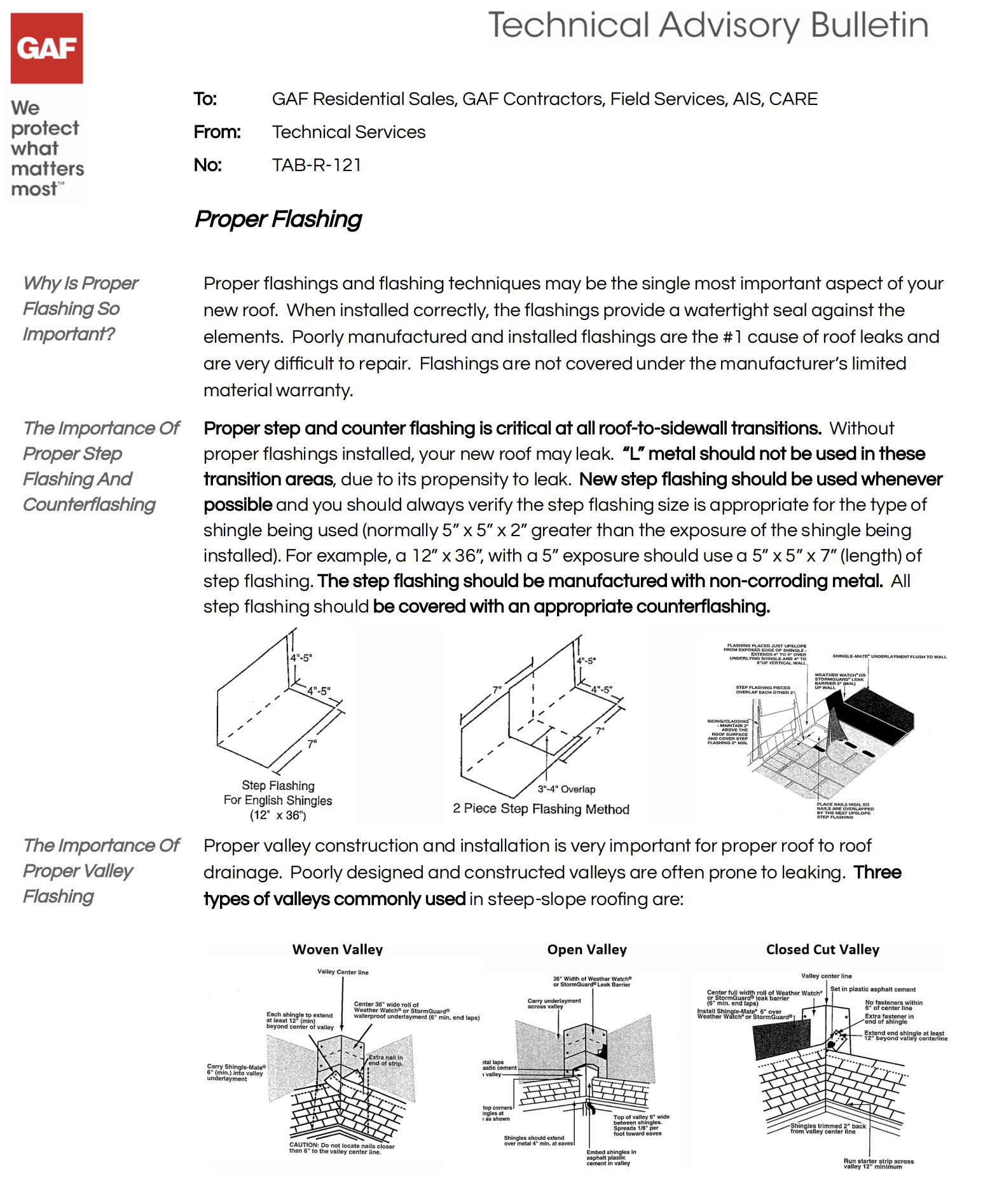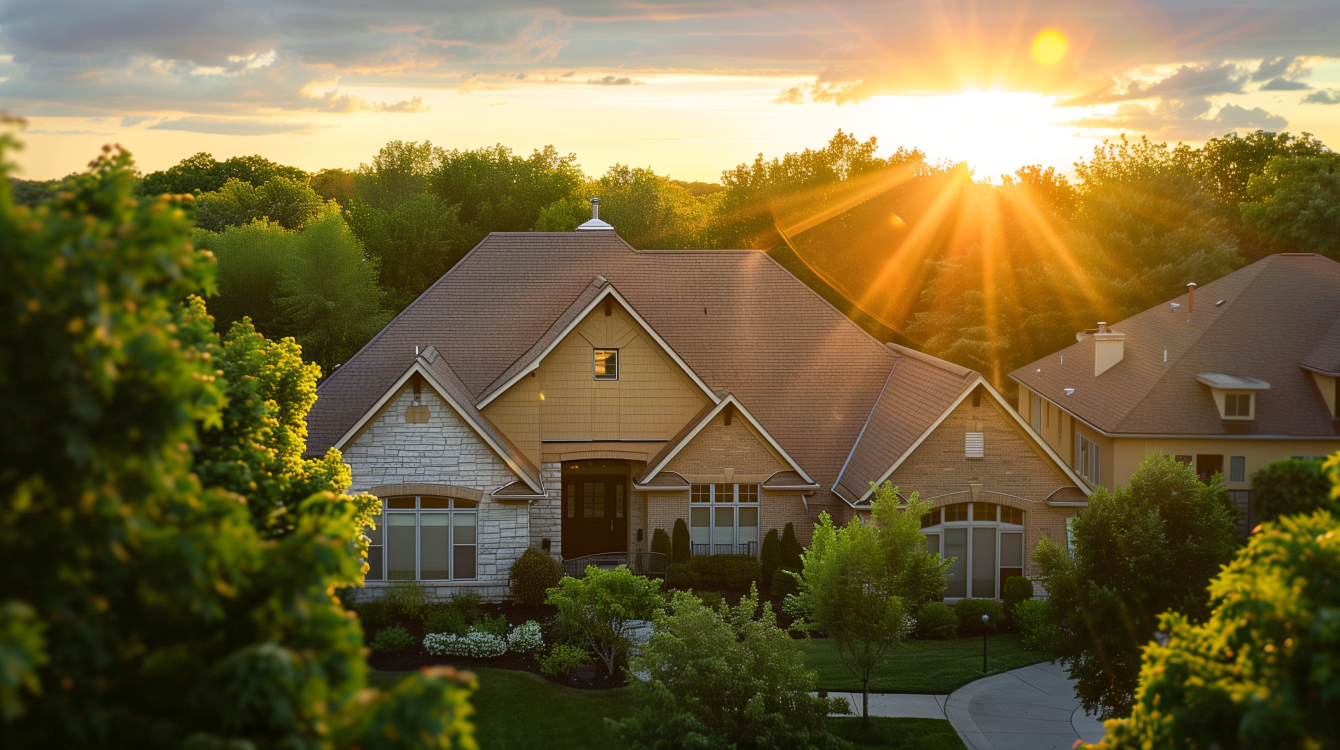Why Is Proper Flashing So Important?
Proper flashings and flashing techniques are crucial for the integrity of your new roof. When installed correctly, flashings provide a watertight seal against the elements, preventing leaks and extending the life of your roof. Poorly manufactured and installed flashings are the number one cause of roof leaks and are notoriously difficult to repair. It’s important to note that flashings are not covered under the manufacturer’s limited material warranty.
The Importance of Proper Step Flashing and Counterflashing
Step and counter flashing are essential at all roof-to-sidewall transitions. Without proper installation, your new roof is at risk of leaking. Avoid using “L” metal in these transition areas due to its propensity to leak. Instead, use new step flashing whenever possible and verify the size is appropriate for the type of shingle being used.
- Recommended Size: For example, a 12” x 36” shingle with a 5” exposure should use a 5” x 5” x 7” (length) step flashing.
- Material: The step flashing should be made of non-corroding metal.
- Counterflashing: All step flashing should be covered with appropriate counterflashing.
The Importance of Proper Valley Flashing
Valleys are critical areas for roof drainage, and proper valley construction and installation are essential to prevent leaks. Poorly designed and constructed valleys are often prone to leaking. Three types of valleys commonly used in steep-slope roofing are:
- Open Valleys
- Closed Valleys
- Woven Valleys
When properly installed and maintained, these valleys provide years of dependable service. For more information on valley flashing, see TAB-R-136, Valley Flashing Options, and review the application instructions printed on the inside of the shingle wrappers to confirm which valley constructions are acceptable for use with the shingles being installed.
Through-Roof Penetrations
All through-roof penetrations, such as plumbing stacks and electrical conduits, should have new flashings installed. These flashings should be fabricated using non-corroding metal. An impermeable leak barrier, such as GAF WeatherWatch® or StormGuard® Leak Barrier, should be placed around all openings prior to roofing.
Conclusion
Proper flashing installation is crucial to the overall performance and longevity of your roof. By ensuring correct installation and using appropriate materials, you can prevent leaks and protect your home from water damage.
For Immediate Service or Consultation
Contact Allied Emergency Services, INC.
Phone: 1-800-792-0212
Email: Info@AlliedEmergencyServices.com
Location: Serving Illinois, Wisconsin, and Indiana with a focus on the greater Chicago area.
If you require immediate assistance or have specific questions, our human support is readily available to help you.
Disclaimer: This article is intended for informational purposes only. For professional advice, consult experts in the field.










